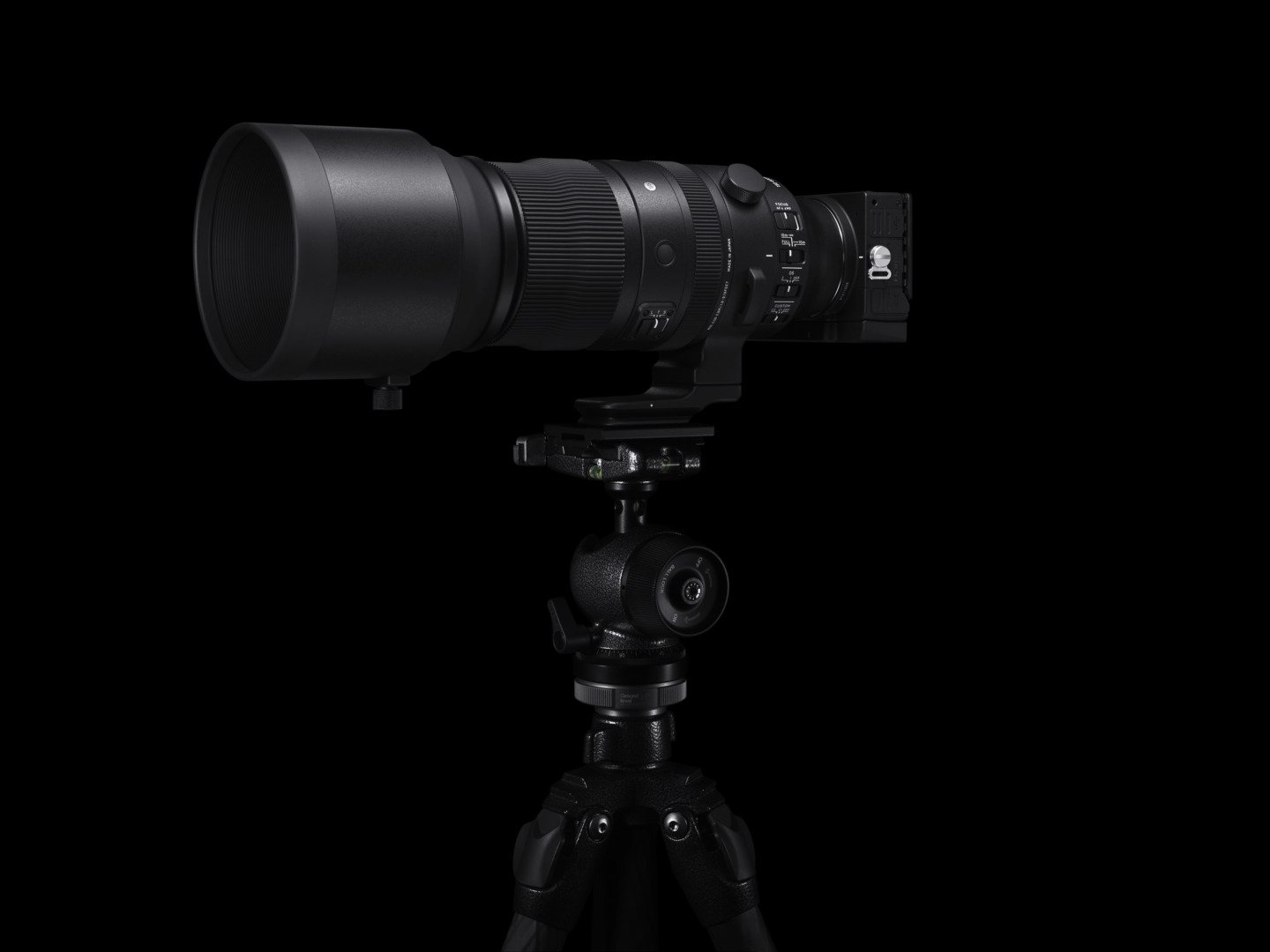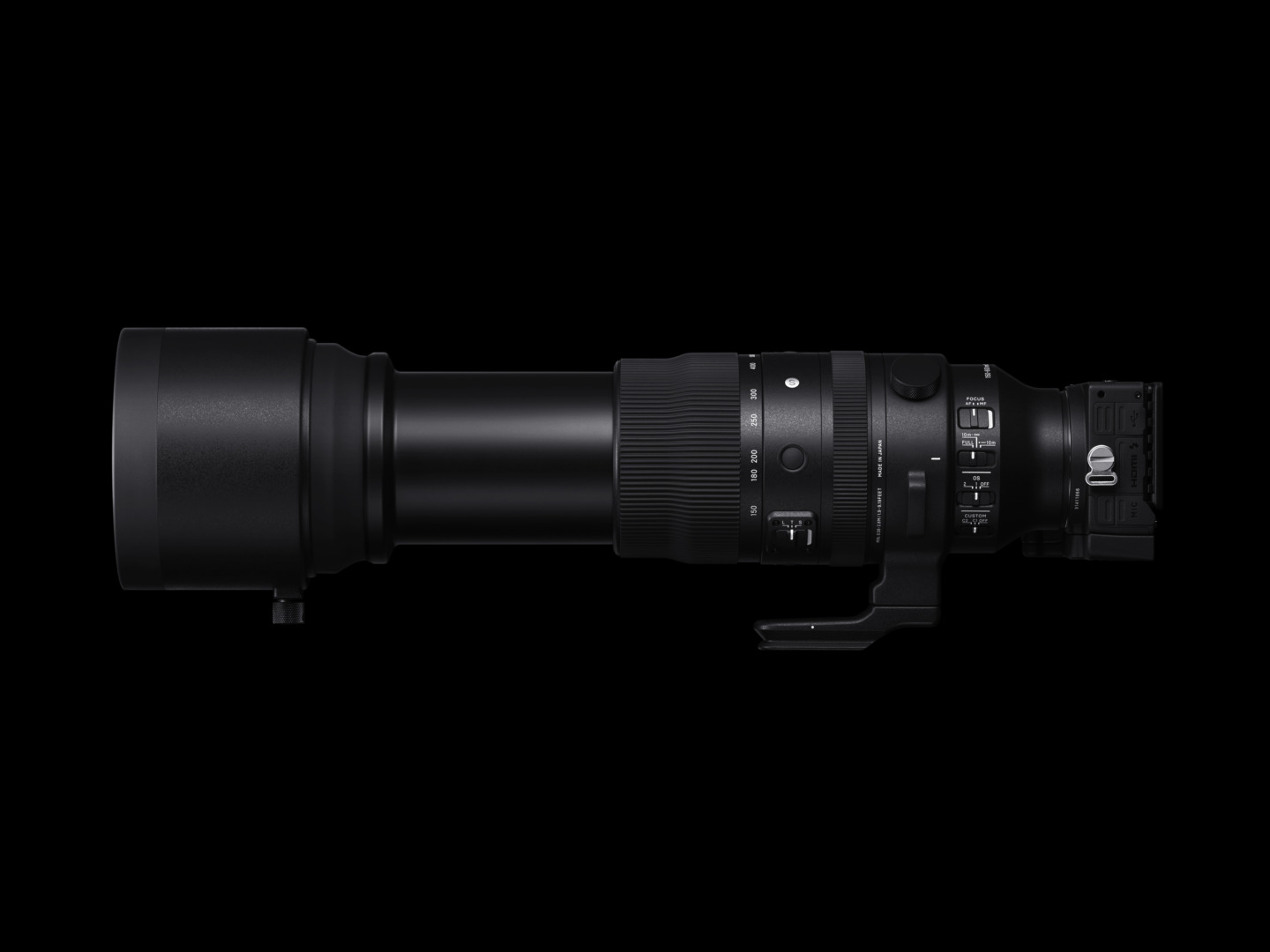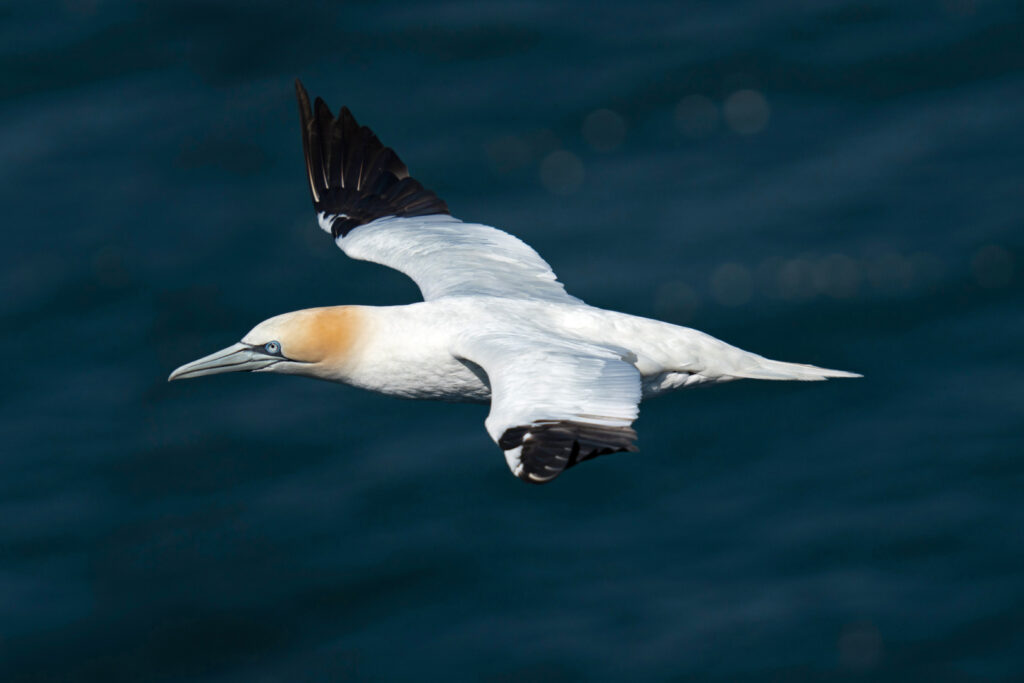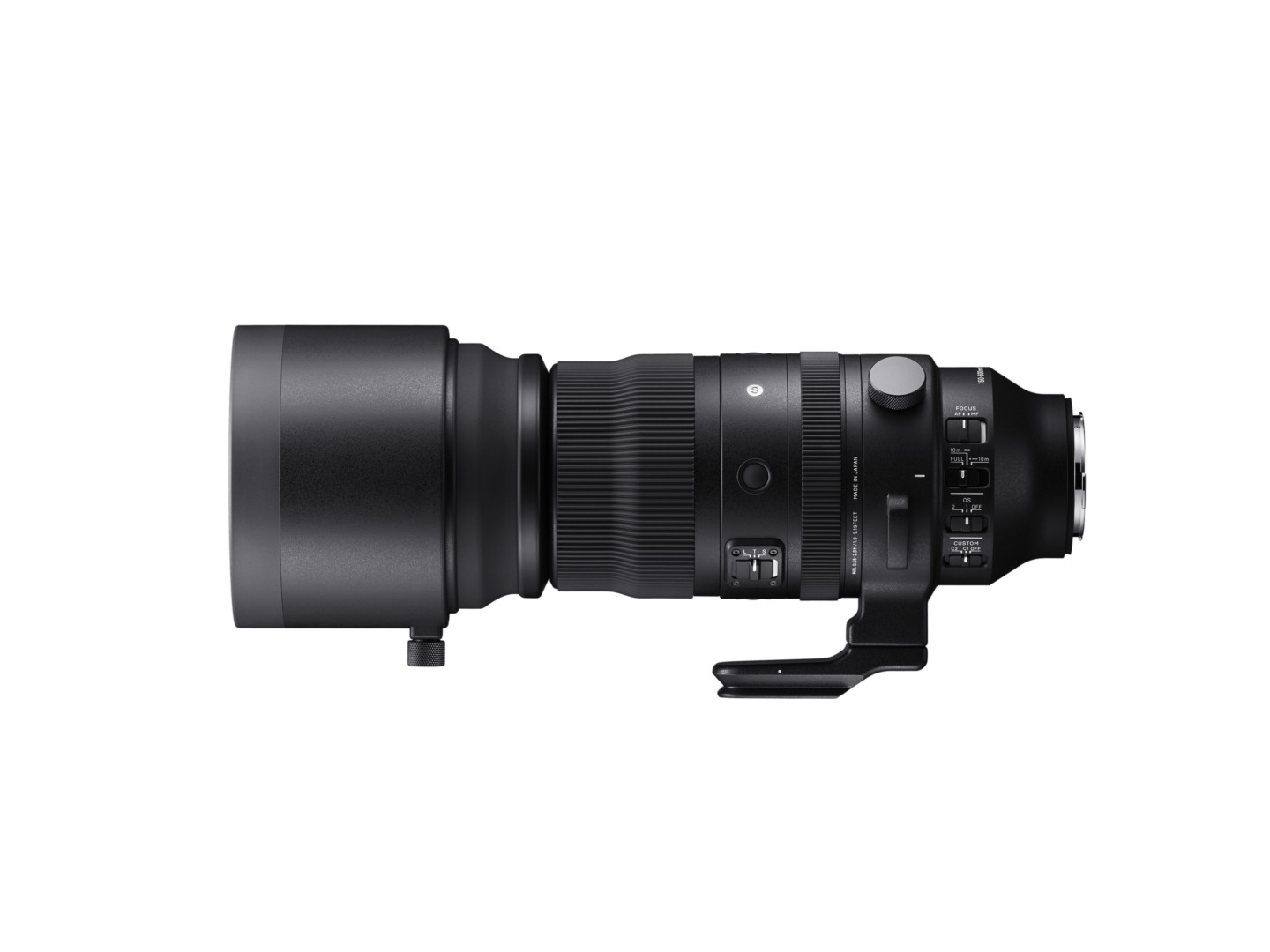The scope of the lens line-up for L-Mount continues to impress. Sigma brings us the 150-600mm F5-6.3 DG DN OS | Sports, the company’s first ultra telephoto sports lens for mirrorless systems. It is also available in E-Mount for Sony.
According to Sigma, image quality is exceptional, “with ultra-high-performance glass capable of delivering ultra-sharp results even on the highest resolution cameras. The lens displays beautiful bokeh throughout its zoom range, and optical aberrations are kept well under control.”
The lens features a dual-action zoom, which supports both straight zoom and ring zoom, allowing the angle of view to be changed in a quick and intuitive way. In addition, there is also a newly incorporated Zoom Torque switch, with which the resistance of the zoom ring can be changed and locked at the wide end, ensuring ease of zoom operation as well as the elimination of zoom creep.
Below are sample shots by Simon Roy and supplied by Sigma (click to enlarge)
Based on the latest optical design technology, its lens construction of 25 elements in 15 groups includes a range of special types of high-performance glass that ensures thorough control of different types of aberrations. This helps give images the resolution and clearest detail – not only at the tele end around 600mm, which is critical for an ultra-telephoto zoom but also throughout its entire zoom range – with no compromise.
The 150-600mm F5-6.3 DG DN OS Sports is a great addition to the ever-expanding library of L-Mount lenses. It offers excellent build quality, great performance in a package that is relatively portable, at 2,100g, for its focal range. At a penny under £1,200 is also attractively priced. The lens will be available from UK dealers on August 27.
Our friend Patrick Leong over at Findingrange.com has tested a pre-production version of the 150-600mm on his Leica SL2 and is thoroughly impressed. Read his full reviw here. Also, here is DPReview’s assessment of the Sigma.
What are your thoughts on the growing range of L-Mount lenses? And are you in the market for an ultra-tele zoom of this type to go with your SL or Panasonic Lumix camera?
PRESS RELEASE
Introducing the SIGMA 150-600mm F5-6.3 DG DN OS | Sports, a powerful ultra-telephoto zoom, and the first-ever Sports line lens for mirrorless systems. This portable and practical optic revolutionises the way mirrorless users capture wildlife, motorsport, and other fast-action subjects.
The 150–600mm F5-6.3 DG DN OS | Sports is SIGMA Sports line’s first ultra-telephoto zoom lens, designed from the ground up specifically for full-frame mirrorless cameras. It offers outstanding levels of performance, functionality, and build quality required for ultra-telephoto shooting in the most demanding situations.
Image quality is exceptional, with ultra-high-performance glass capable of delivering ultra-sharp results even on the highest resolution cameras. The lens displays beautiful bokeh throughout its zoom range, and optical aberrations are kept well under control. It can be used with SIGMA’s 1.4× and 2× L-Mount teleconverters, with AF effective up to 1200mm.
Fast and accurate autofocus owing to an AF unit equipped with a high-precision magnetic sensor, combined with an OS (Optical Stabilizer) function effective to approximately 4 stops of image stabilisation makes this a highly responsive lens that can handle even the most challenging subjects. It has a Dual Action Zoom system that includes straight and ring zoom, a dust and splash resistant structure, and customisable switches helping photographers and filmmakers adapt quickly and easily to virtually any shooting environment.
Capture the long-reach images you have always wanted with an ultra-telephoto lens – that’s the visual experience you will enjoy with the 150-600mm F5-6.3 DG DN OS | Sports, the first ultra-telephoto lens for mirrorless systems from SIGMA Sports line.
Key features
Uncompromising optical performance throughout the zoom range
The SIGMA 150-600mm F5-6.3 DG DN OS | Sports offers outstanding optical performance throughout its zoom range and at all apertures, yielding professional quality results.
Based on the latest optical design technology, its lens construction of 25 elements in 15 groups includes a range of special types of high-performance glass that ensures thorough control of different types of aberrations. This helps give images the resolution and clearest detail – not only at the tele end around 600mm, which is critical for an ultra-telephoto zoom, but also throughout its entire zoom range – with no compromise.
The lens was designed with image quality in the out-of-focus areas in mind as well, with attractive compression and beautiful bokeh for creating eye-catching images that can only be achieved with a long focal length.
Through improvements to the optical and mechanical designs as well as extensive simulated testing, the lens has achieved high resistance to ghosting and flare. This helps ensure sharp and high-contrast images even in strong sunlight or in backlit conditions.
At the wide end of 150mm the lens has an impressive minimum focusing distance of 58cm. For L-Mount users, the use of two dedicated teleconverters will allow you to shoot with AF up to 1200mm. With these features, this new ultra-telephoto lens is the perfect tool for tackling a broad range of subjects.
Fast, high-precision AF and impressive functionality
The 150-600mm F5-6.3 DG DN OS | Sports comes with the pro-level functionality that defines the SIGMA
Sports line lens, which is designed for capturing fast-action subjects.
With an AF actuator controlled by a stepping motor, the lens combines fast and quiet autofocus with excellent tracking of moving objects. Furthermore, a high-precision magnetic sensor enables highly accurate positioning for fast and high-precision AF. This is particularly impressive on an ultra-telephoto lens where the focus lens has to move a significant distance.
The OS function delivers effective image stabilisation that offers an advantage of approximately 4 stops, which is ideal for hand-held shooting at slower shutter speeds. It is possible to change the OS settings using the OS switch and Custom Mode switch to best suit the shooting situation.
The lens has a Focus Limiter switch offering three-zone AF modification, which helps to speed up AF performance, and on the L-Mount it is possible to set a custom focusing limit via the SIGMA USB DOCK. The lens also has three AFL buttons to which you can assign various functions on the camera side depending on the model of camera used. This ensures that key settings are able to be customised to suit your shooting style and be accessed easily so that you can adapt quickly to changing conditions.
With the fast and high-precision AF, 4 stop image stabilisation, and a wide range of customisable functionality that comes with the SIGMA 150-600mm F5-6.3 DG DN OS | Sports, the creative possibilities are limitless.
Outstanding build quality optimised for ultra-telephoto photography
The 150-600mm F5-6.3 DG DN OS | Sports combines the build quality that upholds the SIGMA Sports line standards with excellent operability, taking into account different shooting environments and modes of operation expected with an ultra-telephoto lens.
A dust and splash resistant structure that stops water drops or dust from getting into the lens, combined with a water and oil repellent coating applied to the front element, gives peace of mind even in harsh environments.
The lens features a Dual Action Zoom, which supports both straight zoom and ring zoom, allowing you to change the angle of view in a quick and intuitive way. In addition, there is also a newly incorporated Zoom Torque switch, with which you can change the resistance of the zoom ring and lock it at the wide end, ensuring ease of zoom operation as well as elimination of zoom creep.
On the lens body, there is a magnesium tripod socket attachable to an Arca Swiss-type clamp. The foot is removable and may be replaced with an optional lens foot (replaceable lens foot type) or mounted on a monopod.
The lens body uses parts made of aluminium and TSC (Thermally Stable Composite), where they are most suitable. TSC is a type of polycarbonate with a thermal expansion rate similar to that of aluminium, ensuring the lens behaves consistently at different temperatures. By taking advantage of its design intended exclusively for mirrorless camera systems, the lens is both robust – an attribute essential for the Sports line of lenses – and compact and lightweight.
Compared to the SIGMA 150-600mm F5-6.3 DG OS HSM | Sports, which is also a Sports line lens but designed for SLR cameras, the new lens is lighter by 760g and shorter by 26.6mm.
Additional features
• Lens construction: 25 elements in 15 groups, with 4 FLD and 2 SLD elements
• OS function
• Internal focusing
• Compatible with high-speed autofocus
• Stepping motor
• Compatible with lens aberration correction
• Support DMF and AF+MF
• Super Multi-Layer Coating
• Water and oil-repellent coating (front element)
• Focus Mode switch
• Focus Limiter switch
• OS switch
• Custom Mode switch
• AFL button (3 buttons)
• Zoom Torque switch
• Tripod Socket (TS-121) fixed
• Cover Hood (LH1034-01)
• Dust and splash resistant structure
• Compatible with SIGMA TELE CONVERTER TC-1411 / TC-2011 (sold separately / for L-Mount only)
• Compatible with SIGMA USB DOCK UD-11 (sold separately / for L-Mount only)
• Compatible with SIGMA TRIPOD SOCKET TS-81 (Replaceable lens foot type / sold separately)
• Designed to minimise flare and ghosting
• Every single lens undergoes SIGMA’s proprietary MTF measuring system
• 9-blade rounded diaphragm
• High-precision, durable brass bayonet mount
• “Made in Japan” craftsmanship
Key specifications (The figures below are for L-Mount)
Lens construction: 15 groups, 25 elements (4 FLD and 2 SLD) Angle of view: 16.4° (W) – 4.1° (T)
Number of diaphragm blades: 9 (rounded diaphragm) Minimum aperture: F22-29
Minimum focusing distance: 58cm (W) – 280cm (T)
Maximum magnification ratio: 1:2.9 (at a focusing distance of 180mm) Filter size: φ95mm
Dimensions (Maximum Diameter x Length): φ109.4mm×263.6mm Weight: 2,100g (tripod socket included)
Supplied accessories
FRONT CAP LCF-95III
COVER LENS CAP LC-747E
COVER HOOD LH1034-01
TRIPOD SOCKET (Replaceable lens foot type) TS-121 REAR CAP LCRII L-Mount
Optional accessories
SIGMA TELE CONVERTER TC-1411 for L-Mount SIGMA TELE CONVERTER TC-2011 for L-Mount SIGMA USB DOCK UD-11 for L-Mount
TRIPOD SOCKET TS-81
SIGMA WR CERAMIC PROTECTOR 95mm SIGMA WR PROTECTOR 95mm
SIGMA PROTECTOR 95mm
SIGMA WR UV FILTER 95mm
SIGMA WR CIRCULAR PL FILTER 95mm
COVER HOOD LH1034-01
Leave a reply and join in the discussion
The comments section below every article is a friendly, non-confrontational space where you can air your views without fear of stirring the sort of hornets’ nest that is so often a feature of websites. We welcome your views on the content of our articles, and your opinions on all aspects of photography are a lifeblood for Macfilos. Please let us know, in the section below, if you agree or disagree with our authors’ opinions — and please have no hesitation in adding your advice if you think we’ve overlooked anything important.

















I’m not sure Jason ever intended his article to be a review. It was clearly written as a news item, based on the PR blurb, with some useful signposting to other sources of information.
I agree, and my own comments likewise were not intended so much as a endorsements of this or that lens but rather that it and all such additional L mount alliance products are gradually turning our SL’s SL2 and SL2-S’s into proper system cameras rather them remaining more limited as dare I say it? Mere niche market cameras.
Andrew ..I agree.
But I was saying – when reading “..the PR blurb..” as you put it – that things aren’t necessarily quite as they may seem at first gush of stupendification.
For instance, that bird-in-flight gannet was shot with this lens, but on a Sony A7R MkIII, and THAT camera has 399-points of focal-plane phase-detection PLUS 425-point contrast-detection. The Leica SL2 though, for instance, has just 225 contrast-detection focusing pixels (plus ‘depth mapping’, whatever that may be ..feedback from the lens perhaps?)
That means that results or performance with this lens may depend upon the combination of the lens plus the camera you’re using it on, so perhaps the quick and accurate focusing capability of this lens on a Leica may not be quite as spectacularly quick and accurate as it may be using the greater number of – and more varied capabilities of – the focusing pixels of, for instance, the A7R MkIII ..which also has extra ‘Eye AF’ to lock onto a person’s or animal’s eye.
In this present article the emphasis seems to be on using the lens on an L-mount Leica ..but that eye-catching shot of a bird in flight was NOT taken with this lens on a Leica, but, as Jason says, “It is also available in E-Mount for Sony” ..and that’s the camera which was used for the most spectacular of the accompanying shots.
So the illustrations seem to show what you can get with this lens when used, say, on a Leica or another L-mount camera, but none of these photos was actually shot with an L-mount camera. They were all shot on a Sony E-mount camera.
I think this is what the Cabinet secretary Lord Armstrong called “..being economical with the truth” – by not pointing out that one may get different results with this lens depending upon which camera it’s attached to.
That was my point.
Is that a bit like saying ‘Don’t believe everything you read’…but in 300 words?
I don’t think anyone would disagree with your point, David, or indeed your intent. I just wonder whether your use of the phrase ‘The art of a reviewer is to see through all the hype and blurb [your phrase, actually, not mine]’ might have given the impression that you were criticising the author for not having the ability to see between the lines of the press release, or telling him how to practise his art.
Ahahahahaha. “..According to Sigma, image quality is exceptional..” ..well, er, are Sigma – or anyone else – likely to say “The image quality of our new lens is pretty awful, and not much better than a milk bottle”?
Of course they say “..ultra-high-performance glass capable of delivering ultra-sharp results even on the highest resolution cameras”. Would they say, instead, it uses “low performance plastic” with “not particularly sharp results”..?
The art of a reviewer is to see through all the hype and blurb, and to examine and state what IS particularly good – or bad – about an item. Never fall for the manufacturer’s blurb ..look for what it doesn’tsay.
Leica used to claim that so many of the iconic photos of the 20th century were taken with a Leica ..but, er, sports photos? I think not. Low-light photos? I think that prize went to Ernemann. Long lens photos? No, of course not.
Always take manufacturers’ words with a pinch of salt. Car manufacturers’ mpg figures? Ahahahahaha! ..Pull the other one!
The sample shots by Simon Roy look great – but they don’t show at what distances they were taken. So how are we to judge, from those, how the lens behaves at 150mm to 600mm, and everything in between? Max aperture f5-6.3, so that means using slow-ish shutter speeds (or rather high ISOs) ..so – even with stabilisation – that can mean subject blur, if whatever you’re shooting moves. OK for squirrels and static birds, but the telling photo is the bird in flight ..though we don’t know what shutter speed (1/1000th?) that was, or – more tellingly – at what ISO, unless we look at the EXIF data, and that says: 1/4000th, ISO 500 (!?), f5.6, 353mm.
So 1/4000th at f5.6 and ISO 500 ..? ..That must have been some VERY bright light! But the EXIF also tells us that this was shot NOT with an L-mount camera, but with the E-mount version on a Sony A7R MkIII. That’s a high resolution camera (42.4mpxl) shooting at up to 10 frames per second, with 5-axis stabilisation. We don’t know, of course, how many of the shots of that gannet were NOT pin sharp.
We know that it’s 1080 pixels high by 1620 pixels wide, but that’s only 1.75 megapixels ..so presumably there’s been some cropping done. So the gannet apparently close-up may not have been so close up to the camera, nor shot ‘full-frame’ – as is implied by the photo itself – and so the picture’s not really showing what the lens is capable of, if this is a crop.
But still; 1/4000th at f5.6 and ISO 500 ..? It must have been shot somewhere EXTREMELY bright, to get so much light reflected off the bird.
The pictures look great ..but they don’t tell the real story until you ‘take them apart’, so to speak, and work out how they were taken, and at what distances, etcetera.
Looks useful. I bought the Sigma 100-400 mainly for use at my school’s sports events but ended up mainly using my R mount 180 apotelyt with a 2x extender instead — the shots were just snappier somehow. Both have been used with the TL2 so far giving equivalent 600mm and 560mm ranges.
An SL-2S is now on its way from Leica in Melbourne so it will be interesting to try those lenses with that body and find out if I now need the new longer one…
Not particularly interested in this lens but once more thanks to Sigma for basically keeping the L-mount alive and extending its options and capabilities.
What is most important in my view about not just this much longer than previous new Sigma Zoom lens, plus any or all of the ever increasing number of other superb extra short or extra long lenses from both Sigma and Panasonic is that via extending the L lens length range as they have done far beyond what Leica themselves have so far offered it has in turn meant Leica’s own L mount camera bodies are now vastly more versatile than they were when limited to them only being able to use Leica’s own lenses.
I am not interested in such a super telephoto but I am delighted that it is available for those that need it. It certainly improves the shooting envelope for the L mount system making it more attractive for a wider range of photographers.
Not in my list either but I appreciate its being there. I bought the 100-400, thinking it would be useful, but is has been used only a couple of times. Event they Ken’s is too heavy for me to carry around and, frankly, I’ve mainly used the Q2 in the past year. I’ve even been using the iPhone, in common with John S, because it’s there if an unexpected opportunity arises.